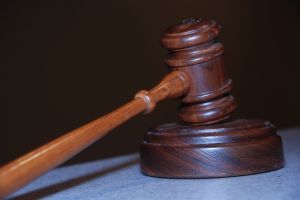Boston was founded in the name of “religious freedom,” so it is not surprising to that the city has a very interesting history in regards to religion and its churches. Some of that history can be experienced today by the casual traveler.
First Church of Boston
One of the very first things the founding puritans of Boston, England did when they arrived in 1630 on the shores of what would become Boston, Massachusetts was to gather a church, the First Church. By the 19th Century, however, Boston had changed dramatically, and like many of its counterparts, the First Church relocated to the new Back Bay area of Boston. And there, they constructed a lovely, if traditional, English inspired Gothic-Revival church. That church largely burned to the ground, however, in 1968. Left without adequate funds to rebuild, the First Church built a new church on the charred site. Designed by Paul Rudolph, the new First Church was a bit of a departure, to say the least. Built behind the “screen” of the old Victorian east wall and corner tower, the new church is thoroughly “modern,” sculptural in shape and clad in textured concrete. Note the pleasant dialogue the modern tower has with its Victorian counterpart. There’s no jealousy whatsoever. Inside, natural light is allowed to dance off the ever so slightly undulating concrete walls. And unlike many churches, acoustically, the First Church of Boston is a delight. It’s a wonderful place to hear music.
The First Church of Boston is located at Marlborough Street, at the corner of Berkley Street in Boston’s Back Bay, two blocks from the Public Garden. The church is not open to the public for touring. However, it does present a regular concert series which is open to the public.
King’s Chapel
In 1684, the world changed for the people of Massachusetts. Their hard won and beloved charter, granted to the puritans in 1630, had been revoked by the Crown in England. And with that simple act, they had lost what independence they had from the Crown. No longer would they be responsible for electing their own leaders. No, Massachusetts Governors would now be royally appointed in London. The local government’s bureaucracy would consist of outsiders chosen at the Governor’s discretion. The first of these Governors, Edmond Andros, established the Anglican Church in Boston, to the shock and horror! of the locals. On what was then a remote piece of real estate, at the edge of Boston’s first burying ground, Andros had constructed the first King’s Chapel in 1686. Generations later, when the need to move to a larger church was thwarted by locals still angry at the presence of an Anglican church in Boston, the church decided to expand on site. So, today’s granite church (which dates to 1754) was literally built around its older wooden predecessor. When complete, the older wooden structure was disassembled and walked out the door. When the British evacuated Boston (and the church) in 1776, the minority membership declared their own independence from the Anglican Church, reorganized and ultimately called a Unitarian minister to their pulpit. The King’s Chapel is considered America’s very first Unitarian Church. Designed by Peter Harrison of Newport, this church would have certainly been elegant if completed. The ornate steeple, which would have doubled the side of the bell tower, was not constructed due to financial constraints. Also, note the columns of the portico. The stone columns that were donated to the church were never delivered due to very similar budgetary concerns. Instead, wooden columns were installed and painted to match the greystone building. Inside, I consider this church to have the nicest Colonial era interior in Boston. Note the “King’s Box,” which George & Martha Washington once used, and the pulpit, which is the original 17th Century pulpit from the first King’s Chapel.
The King’s Chapel is located at the corner of Tremont and School Streets along Boston’s Freedom Trail. It is open to the public for touring.




